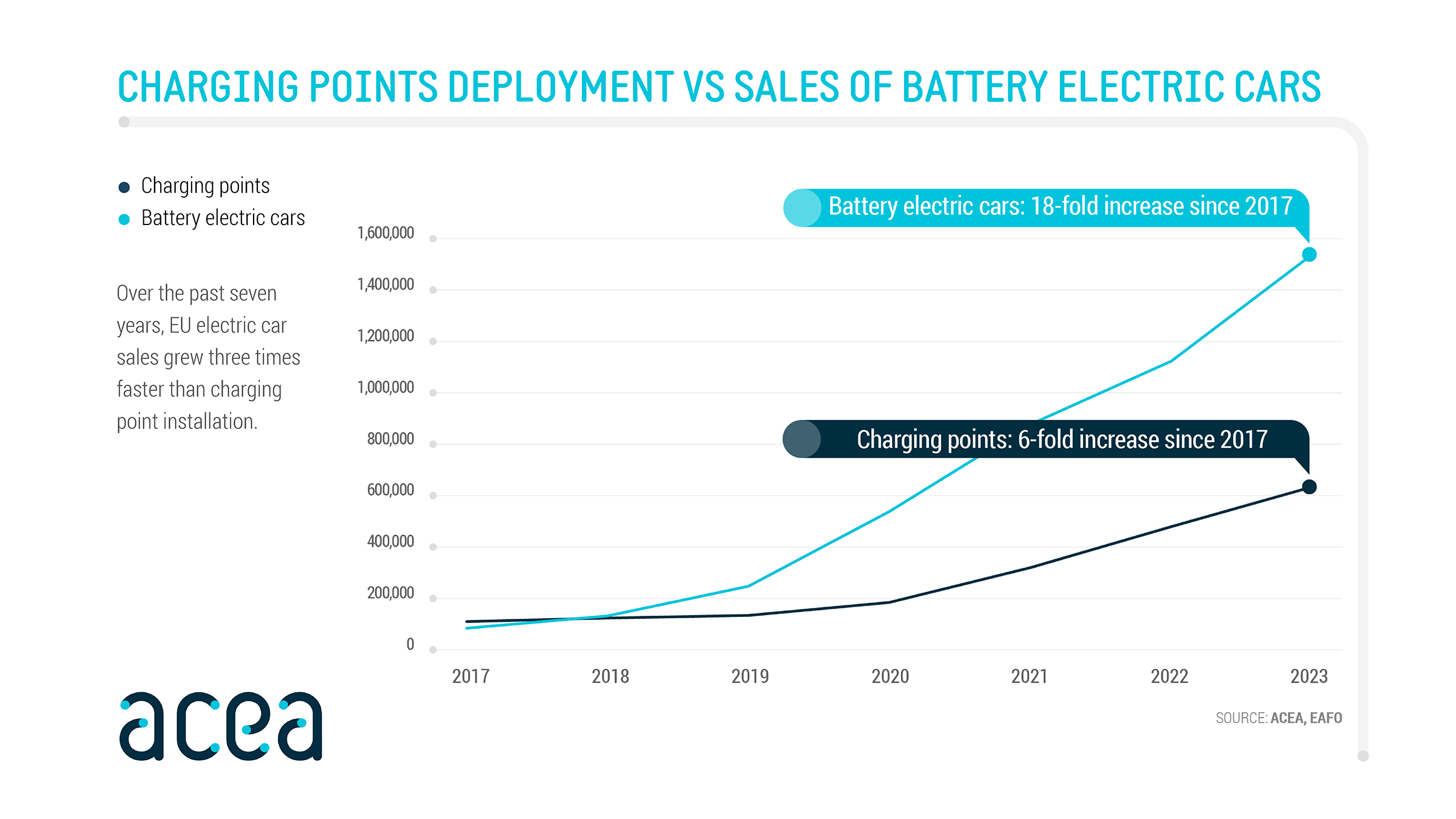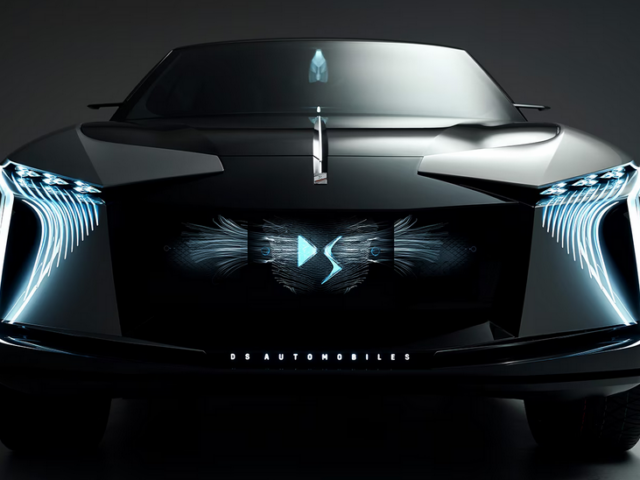According to the European Automobile Manufacturers’ Association (ACEA), the growth rate of charging point installations is not keeping pace with the expansion of EV sales. If not accelerated, the rollout of EV adoption will inevitably be hampered. However, a similar study by Transport & Environment is more optimistic about the progress.
The report highlights an ‘alarming’ gap, noting that while EV sales have expanded rapidly, the growth rate of charging point installations has not kept pace since 2017. EU electric car sales grew three times faster than charging point installations. According to ACEA, this discrepancy underscores a critical barrier to achieving the EU’s ambitious environmental targets from the Green Deal.
Eight times more
Specifically, the EU must install eight times the current number of charging points annually by 2030 to meet the demand. The European Commission estimates a requirement of 3.5 million charging points by 2030, which would entail installing about 8,000 charging points per week.
Furthermore, the ACEA suggests that even this target may be insufficient, recommending that up to 8.8 million charging points might be necessary, requiring an installation rate of a whopping 22,000 points per week.
“We need mass-market adoption of electric cars in all EU countries to achieve Europe’s ambitious CO2-reduction targets. This will not happen without widespread availability of public charging infrastructure across the region,” stated ACEA’s Director General, Sigrid de Vries.
Does 3 million suffice?
Another report from Transport & Environment concludes that the rollout of charging infrastructure is broadly on track and well-aligned with the EU’s commitments. It offers a more optimistic view. The rapid increase in AC (slow) and DC (fast) charging points is highlighted, showing exponential growth.
T&E states that the adoption rate will see Europe hit a target of 3 million charging points by 2030 (or 500,000 less than ACEA notes), but it doesn’t make sound conclusions about whether that target is sufficient.
Is a network of 3 million points enough? It seems to form the core of the debate. Both organizations start with the same figures and acknowledge that by the end of 2023, 632,432 points were installed.
Not enough fast-charging
Hiding behind those general numbers is a geographical mismatch. The ACEA report points out that just three countries (the Netherlands, France, and Germany) house nearly two-thirds of all those charging points, indicating a possible imbalance in infrastructure distribution across the continent. T&E sees a relatively balanced scenario: “The speed of charging infrastructure deployment is almost exclusively a success story across all EU members.”
Finally, ACEA also points to the slow speed of the installed network. With only one in seven points capable of DC charging, fast chargers are only a fraction of the total number of charging points installed. However, their cost disadvantage and infrastructural complexity make them more challenging to deploy. In 80% of cases, EV drivers charge at home or the office.




Comments
Ready to join the conversation?
You must be an active subscriber to leave a comment.
Subscribe Today